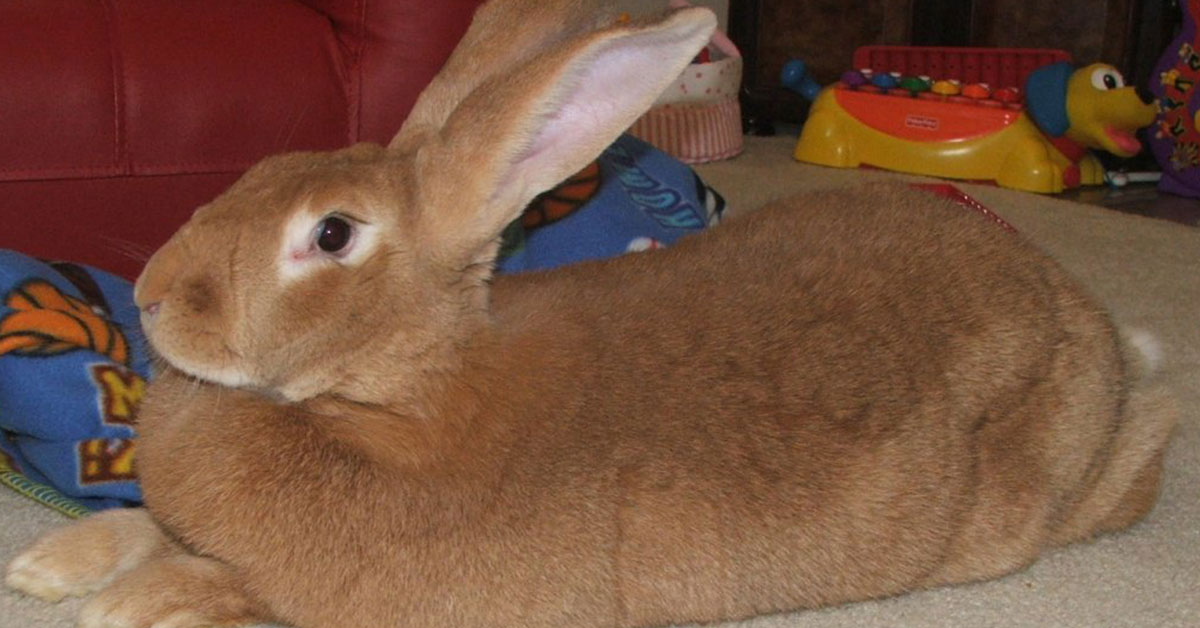The Flemish Giant Rabbit, a majestic breed known for its size and gentle nature, has captured the hearts of rabbit enthusiasts worldwide. This article delves into the intriguing aspects of these gentle giants, providing a comprehensive guide for anyone interested in learning more about them. From their history and characteristics to care tips and common misconceptions, we cover it all. Whether you’re a potential owner or just curious, this guide offers valuable insights into the world of the Flemish Giant Rabbit.
Key Takeaways
- The Flemish Giant Rabbit is one of the largest rabbit breeds, known for its docile temperament and impressive size.
- Proper care, including diet, housing, and health monitoring, is essential for their well-being.
- Understanding their history and characteristics can enhance your appreciation and care of these gentle giants.
The Origins and History of the Flemish Giant Rabbit

The Flemish Giant Rabbit traces its roots back to the 16th century in Flanders, a region that is now part of modern-day Belgium. Originally bred for meat and fur, these rabbits were prized for their substantial size and high yield. Over time, their gentle nature and striking appearance made them popular as pets and show animals.
In the late 19th century, the breed made its way to America, where it quickly gained recognition for its unique attributes. Today, the Flemish Giant Rabbit is celebrated not only for its size but also for its friendly demeanor, making it a favorite among rabbit enthusiasts and families alike.
Characteristics of the Flemish Giant Rabbit

Known for their impressive size, Flemish Giant Rabbits can weigh between 15 to 22 pounds, with some individuals even surpassing this range. Their bodies are long and powerful, with a semi-arched back and a broad, flat head. Their ears are large and upright, adding to their distinctive appearance.
Temperament

Despite their formidable size, Flemish Giants are known for their docile and friendly nature. They are often described as “gentle giants” due to their calm disposition and affectionate behavior. These rabbits are social creatures that enjoy interaction with humans and other animals, making them excellent companions.
Color Varieties
The Flemish Giant Rabbit comes in a variety of colors, including sandy, fawn, white, blue, black, steel gray, and light gray. Each color is recognized by rabbit associations and adds to the breed’s appeal and diversity.
Caring for Your Flemish Giant Rabbit
Owning a Flemish Giant Rabbit requires a commitment to their care and well-being. Here are some essential tips to ensure your rabbit thrives:
Diet and Nutrition
A balanced diet is crucial for the health of a Flemish Giant Rabbit. They require a diet rich in hay, fresh vegetables, and a limited amount of pellets. Hay should make up the majority of their diet, as it aids in digestion and dental health. Fresh water should always be available.
Housing Requirements
Due to their size, Flemish Giants need ample space to move around comfortably. A large, secure enclosure with a soft bedding area is ideal. They should have enough room to stretch out fully and stand on their hind legs without restrictions.
Exercise and Enrichment
Regular exercise is essential for maintaining a healthy weight and preventing boredom. Providing toys, tunnels, and opportunities for supervised outdoor play can keep your rabbit physically and mentally stimulated.
Health Monitoring
Regular veterinary check-ups are vital to monitor the health of your Flemish Giant Rabbit. Be on the lookout for common health issues such as dental problems, obesity, and gastrointestinal stasis. Prompt attention to any signs of illness can prevent more serious health concerns.
Common Misconceptions About Flemish Giant Rabbits
Despite their popularity, several misconceptions surround Flemish Giant Rabbits. Here are a few myths debunked:
- Myth: Flemish Giants are aggressive due to their size.
Fact: These rabbits are known for their gentle and friendly nature, making them excellent pets.
- Myth: They require less space because they are just big rabbits.
Fact: Flemish Giants need more space than smaller breeds to move around comfortably.
- Myth: They can live solely on pellets.
Fact: A diet primarily consisting of hay, supplemented with fresh vegetables and a limited amount of pellets, is essential for their health.
The Flemish Giant Rabbit is a remarkable breed that combines size with a gentle temperament, making it a beloved choice for rabbit enthusiasts. Understanding their history, characteristics, and care needs can greatly enhance your experience as an owner or admirer. By providing the proper care and attention, you can ensure that your Flemish Giant thrives and becomes a cherished member of your family.
Whether you’re considering adopting a Flemish Giant Rabbit or simply fascinated by their majestic presence, this guide offers valuable insights into their world. Embrace the journey of learning and caring for these gentle giants, and you’ll find a rewarding companion in the Flemish Giant Rabbit.